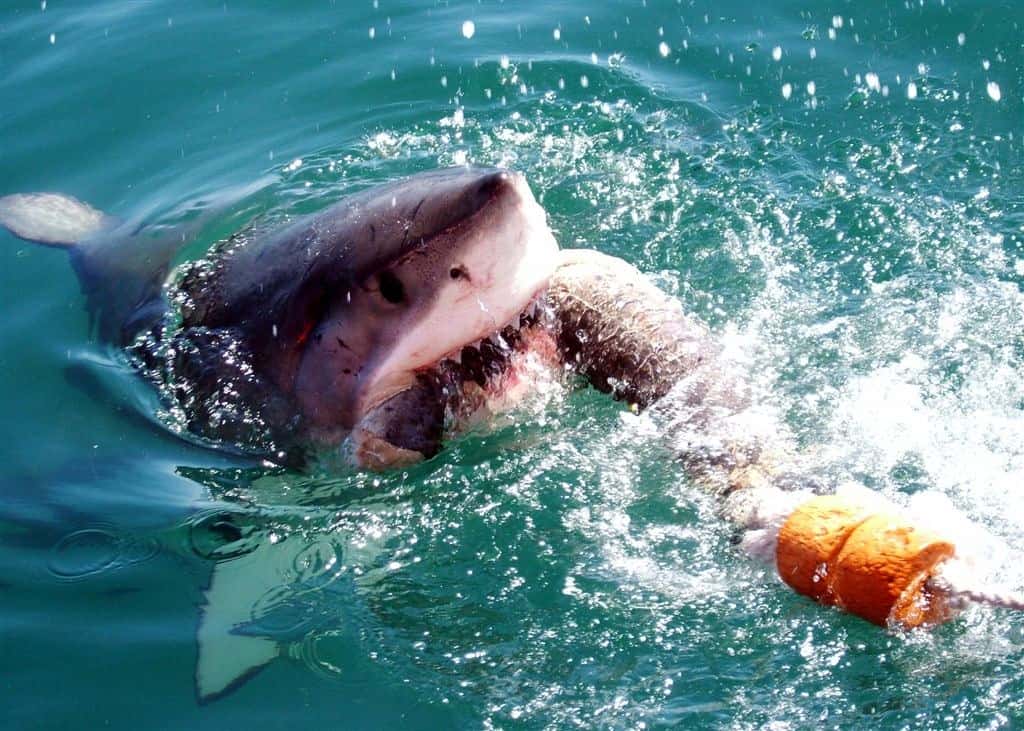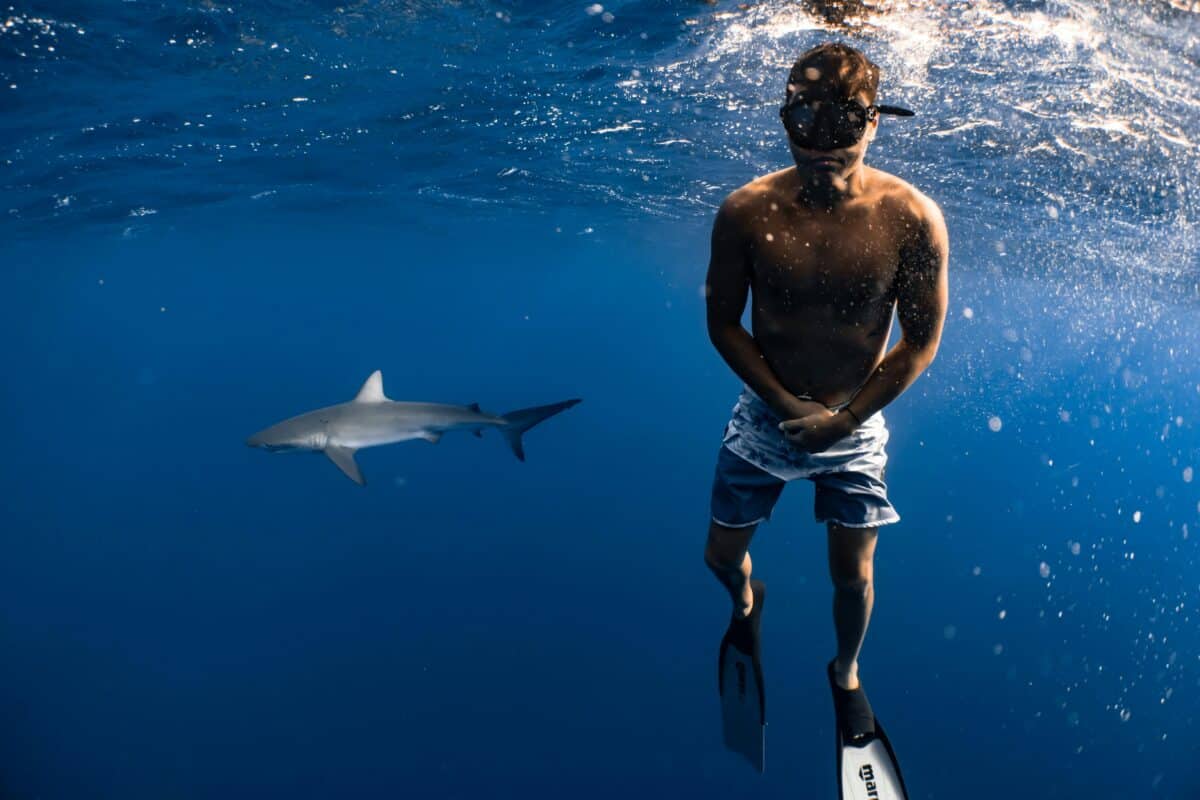Sharks have long captured the human imagination, evoking both fascination and fear. From the infamous portrayal in “Jaws” to sensationalized media coverage of shark incidents, these ancient predators are often misunderstood and misrepresented. Despite their fearsome reputation, sharks rarely target humans intentionally, and understanding their behavior is crucial for promoting coexistence and conservation. This article delves into the truth about shark behavior around humans, exploring the science behind shark-human interactions, debunking common myths, and providing evidence-based insights into these remarkable marine animals.
The Evolution of Shark Perception

Throughout history, our perception of sharks has undergone significant transformations. Ancient maritime cultures often revered sharks as powerful deities or spiritual beings. Hawaiian traditions, for instance, considered sharks as ‘aumakua’ or family guardians. However, this respect gradually shifted toward fear, particularly in Western cultures. The turning point came with Peter Benchley’s novel “Jaws” and the subsequent film adaptation in 1975, which cemented the image of sharks as mindless man-eaters in popular culture. This portrayal sparked decades of misunderstanding and has been difficult to overcome, despite Benchley himself later becoming an advocate for shark conservation, expressing regret about the fear his work had instilled. Today, marine biologists and conservationists work tirelessly to reshape public perception, emphasizing sharks’ ecological importance and their generally non-aggressive nature toward humans.
Shark Senses and Human Detection

Sharks possess a remarkable array of sensory adaptations that help them navigate their environment and locate prey. Their primary senses include vision, smell, hearing, and the ability to detect electrical fields through specialized organs called ampullae of Lorenzini. Contrary to popular belief, sharks do not mistake humans for seals or other prey items – their sensory capabilities are far too sophisticated for such confusion. When a shark detects a human in the water, it typically employs multiple senses to investigate. Their keen sense of smell can detect blood at concentrations as low as one part per million, while their electroreception can sense the minute electrical fields generated by all living organisms. These sophisticated senses allow sharks to form a comprehensive picture of their surroundings, helping them distinguish between potential prey and unfamiliar objects like humans. Most shark investigations of humans are driven by curiosity rather than predatory intent, which explains why many shark encounters end with the shark swimming away after an initial inspection.
The Reality of Shark Attack Statistics

Despite the widespread fear of shark attacks, the statistical reality paints a starkly different picture. According to the International Shark Attack File (ISAF), there are typically fewer than 100 shark attacks worldwide annually, with fatalities averaging around 5-10 per year. To put these numbers in perspective, humans are more likely to die from bee stings, lightning strikes, or even falling coconuts than from shark attacks. In 2022, there were 57 confirmed unprovoked shark bites worldwide, resulting in 5 fatalities. These statistics represent an infinitesimal risk when compared to the millions of people who enter ocean waters daily. Moreover, the term “shark attack” itself has been criticized by marine scientists as sensationalistic, with many researchers preferring more neutral terms like “shark incident” or “shark encounter” to accurately reflect the nature of most interactions. The disproportionate fear of sharks compared to the actual risk they pose highlights how cultural narratives and media portrayal can distort our perception of wildlife.
Understanding “Unprovoked” vs. “Provoked” Encounters

Shark researchers categorize human-shark interactions into two primary types: unprovoked and provoked encounters. Unprovoked encounters occur when a shark initiates contact with a human who is not deliberately interacting with the shark. These incidents typically involve sharks acting out of curiosity, territorial defense, or mistaken identity in murky waters. Provoked encounters, conversely, result from humans initiating contact with sharks, such as during fishing activities, attempts to touch or feed sharks, or other forms of harassment. Statistically, provoked encounters are more common but receive less media attention. Understanding this distinction is crucial for accurate risk assessment and developing appropriate safety guidelines. Furthermore, many unprovoked encounters do not result in injury – they may involve a shark approaching a human, investigating briefly, and then departing without physical contact. The distinction between these types of encounters helps scientists better understand shark behavior and develop more effective conservation and safety measures.
Species Most Commonly Involved in Human Encounters

While there are more than 500 species of sharks inhabiting our oceans, only a handful are regularly involved in encounters with humans. The three species most frequently implicated in incidents with humans are the great white shark (Carcharodon carcharias), tiger shark (Galeocerdo cuvier), and bull shark (Carcharhinus leucas). These species share certain characteristics: they are large, powerful predators that inhabit coastal waters where human activities are common. The great white shark, responsible for the highest number of unprovoked fatal encounters, typically inhabits temperate coastal regions worldwide. Tiger sharks, known for their less discriminating feeding habits, are common in tropical and subtropical waters. Bull sharks are unique in their ability to tolerate freshwater, allowing them to venture far upriver where they may encounter humans in unexpected locations. Other species occasionally involved in incidents include blacktip sharks, spinner sharks, and oceanic whitetip sharks. However, it’s important to note that even among these species, human encounters are exceptionally rare relative to their populations and range.
The “Exploratory Bite” Hypothesis

Many shark researchers support the “exploratory bite” hypothesis to explain most shark-human interactions. Unlike humans, sharks lack hands to investigate objects of interest in their environment. Instead, they often use their mouths as sensory organs to gather information about unfamiliar objects. When a shark encounters a human – an unusual entity in its underwater world – it may take an exploratory bite to determine if the human is potential prey. This investigative behavior explains why many shark bites are singular events rather than sustained attacks. After an initial bite, sharks typically retreat, having determined that humans are not their preferred prey. This hypothesis is supported by the observation that many shark bites are relatively shallow compared to the damage these predators are capable of inflicting when actively hunting prey. For example, when a great white shark attacks a seal, it often delivers a devastating bite and immediately begins feeding. In contrast, most bites on humans lack this predatory follow-through, suggesting that the shark quickly recognizes that humans are not appropriate food sources.
Environmental Factors Influencing Shark Behavior

Various environmental conditions can significantly influence shark behavior and the likelihood of human-shark encounters. Factors such as water temperature, visibility, time of day, and the presence of natural food sources all play crucial roles. Many shark species are more active during dawn and dusk – periods known as the “crepuscular hours” – when hunting conditions are optimal for these visual predators. Reduced water visibility due to murky conditions, heavy rainfall, or coastal runoff can impair sharks’ ability to clearly identify objects, potentially increasing the risk of investigatory interactions with humans. Ocean currents and water temperature also influence shark distribution patterns, with some species following warm-water currents that may bring them closer to populated coastlines seasonally. Human activities that alter marine ecosystems can indirectly affect shark behavior as well. For instance, fishing practices that deplete natural prey species may force sharks to explore alternative food sources, potentially bringing them into closer proximity with recreational water users. Understanding these environmental influences is essential for predicting and mitigating potential risk areas and time periods.
Human Behaviors That Increase Risk

While shark encounters are rare, certain human activities can increase the likelihood of negative interactions. Swimming in areas known for fishing activities can be particularly risky, as the presence of bait, fish blood, and struggling fish can attract sharks to the area. Similarly, swimming near seal colonies or during whale migrations may increase risk, as these are natural feeding grounds for certain shark species. Isolated swimmers, particularly those far from shore, may also face elevated risk compared to those in groups. Water activities at dawn, dusk, or night – when many shark species are most active – can increase the chances of an encounter. Wearing high-contrast clothing or jewelry that reflects light in ways that might resemble the flash of fish scales can potentially attract curious sharks. Erratic movements in the water, such as splashing or thrashing, may trigger a predatory response in nearby sharks by mimicking the movements of injured prey. Awareness of these risk factors can help ocean users make informed decisions about when and where to engage in water activities.
Debunking Common Myths About Shark Aggression

Many misconceptions about shark behavior persist in popular culture, often exaggerating their aggression and intent toward humans. One common myth is that sharks actively hunt humans as prey – scientific evidence overwhelmingly contradicts this notion. Humans are not nutritionally valuable to sharks, lacking the calorie-dense blubber that comprises their preferred diet. Another widespread belief is that sharks can detect a single drop of blood from a mile away, triggering a feeding frenzy. While sharks do have an impressive sense of smell, this ability has been greatly exaggerated – their detection range is more likely tens to hundreds of meters, not miles, and many species show little interest in human blood. The myth that all sharks are dangerous to humans ignores the fact that of the 500+ shark species, only about a dozen have been involved in unprovoked incidents with humans. Perhaps most harmful is the belief that “the only good shark is a dead shark” – a sentiment that has contributed to devastating population declines. In reality, sharks are vital to marine ecosystem health, and the vast majority pose no threat to humans whatsoever.
Shark Deterrent Technologies: What Works?

As our understanding of shark behavior advances, so too does the development of technologies designed to reduce negative shark-human interactions. Electric repellents, such as Shark Shield, create an electrical field that causes discomfort to sharks by overstimulating their electroreceptors. Scientific testing has shown varying degrees of effectiveness for these devices, with some providing significant protection against certain species. Visual deterrents, including specialized wetsuits and surfboard designs that disrupt sharks’ visual perception, have shown promise in controlled studies but require further testing in real-world conditions. Chemical repellents, often based on compounds extracted from dead sharks (necromones), exploit sharks’ natural avoidance of deceased members of their species. Magnetic repellents target sharks’ electroreception system and have demonstrated some effectiveness in controlled environments. Acoustic deterrents that emit sounds unpleasant to sharks are also under development. However, no technology currently offers 100% protection, and many scientists emphasize that education and awareness of shark behavior remain the most effective tools for reducing risk. The ideal approach combines technology with behavioral adjustments and environmental awareness.
The Impact of Climate Change on Shark-Human Interactions

Climate change is altering marine ecosystems in ways that may affect shark behavior and distribution, potentially influencing the frequency and nature of shark-human interactions. Rising ocean temperatures are causing shifts in the geographical range of many shark species, bringing them into waters where they were previously uncommon. This range expansion may lead to sharks appearing in areas where humans are not accustomed to their presence, potentially increasing the likelihood of unexpected encounters. Changes in ocean currents and water temperature are also affecting the distribution of sharks’ prey species, which may alter traditional feeding patterns and hunting grounds. Ocean acidification, another consequence of climate change, could potentially impact sharks’ sensory capabilities, though research in this area is ongoing. More extreme weather events may increase coastal runoff, creating murky water conditions that impair visibility for both sharks and humans. While the full implications of climate change on shark-human interactions are still emerging, scientists emphasize the importance of adaptive management strategies and continued research to monitor and respond to these changing dynamics.
Conservation Implications of Human Fear

The disproportionate fear of sharks has had devastating consequences for their populations worldwide. Exaggerated perceptions of danger have fueled support for shark culling programs, where sharks are systematically killed near popular beaches in an attempt to increase human safety. However, scientific evidence consistently shows that these programs do little to reduce the already minimal risk of shark incidents while causing significant harm to marine ecosystems. Sharks are particularly vulnerable to population depletion due to their slow growth, late maturity, and low reproductive rates. Many species take 10-15 years to reach sexual maturity and produce relatively few offspring. As a result, shark populations recover very slowly from depletion. The ecological consequences of removing these apex predators are far-reaching, potentially triggering trophic cascades that affect entire marine food webs. For example, the decline of sharks can lead to increases in mesopredator populations, which in turn can deplete herbivorous fish populations, potentially allowing algae to overgrow and smother coral reefs. Shifting public perception from fear to respect is therefore crucial not just for shark conservation but for the health of marine ecosystems broadly.
Conclusion: Coexisting with Ocean Predators

The truth about shark behavior around humans reveals a reality far different from popular perception – these ancient predators are not the mindless man-eaters often portrayed in media but complex animals that rarely target humans intentionally. Understanding shark behavior through scientific research rather than cultural myths is essential for both human safety and shark conservation. By recognizing the actual patterns of shark behavior, the environmental factors that influence their movements, and the human activities that might increase risk, we can develop more effective strategies for coexistence. The future of shark conservation depends largely on our willingness to replace fear with facts and develop evidence-based approaches to reducing negative interactions while protecting these ecologically vital species. As we continue to learn more about these remarkable predators, we gain not only greater safety in the water but also a deeper appreciation for the intricate balance of ocean ecosystems that sharks have helped maintain for over 400 million years.
- The Wolves of Yellowstone: A Comeback Story - August 9, 2025
- What Happens During a Wolf Pack Power Struggle - August 9, 2025
- The Most Unexpected Snowfalls in Hot Regions - August 9, 2025

